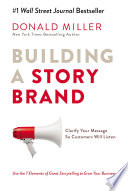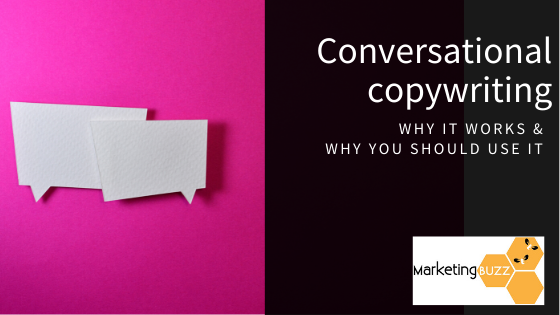Writing a website is not something you do in an afternoon.
Ok, it’s possible.
But if you’re looking to create a website that connects to your audience and inspires them to say “I want what they’ve got!”, you’ll need to spend a bit more time gathering your thoughts.
Using a story formula to write your website
All professional website copywriters have their own tried and tested approach to writing a website.
I recently wrote a website for a financial planner using a story approach.
Using story as the basis of writing a business website has been popularised by many well-known marketers. My favourite is described in Donald Miller’s book Building a Story Brand.
His background as a movie scriptwriter led him to develop his StoryBrand Framework for business writing. Now his organisation runs in-person and virtual workshops on how to use this formula to write websites, emails – basically anything where you’re selling a product, service or an idea.
Writing with clarity is the best way to reach your customers
The StoryBrand tagline is ‘Clarify your Message so Customers Will Listen’. Based on Miller’s experience and research, he’s concluded that the human brain is naturally drawn to clarity and away from confusion.
His key message is:
- Having a simple, relevant and repeatable message is the only way to reach people and inspire them in the action.
- You must avoid making people work hard to understand your message. This is especially true when there’s so much ‘noise’ – after all, every day, we’re all bombarded with tonnes of advertising messages.
According to the StoryBrand formula:
The key is to make your company’s message about something that helps the customer survive and to do so in such a way that they can understand it without burning too many calories.
How to write your website using a story approach
Stories help people make sense of the world. People have used stories for millennia to pass on important information to help them survive.
From Star Wars to James Bond, writers have used a framework that has 7 key elements:
-
A Character
This is the central ‘hero’ of the story.
Many businesses frame themselves or their product as the hero in their marketing material.
This is a mistake.
According to the StoryBrand approach, the hero is always your customer.
Before you even start writing your website, you need to have a clear picture of who your customer is.
- What do they look like?
- What are their fears, hopes, dreams?
- And finally, what is it that the hero wants?
As you write your website, keep this picture top of mind. It works best if you can picture an actual person.
The StoryBrand approach recommends you pare the character’s need down to a single desire. For example: ‘to conserve their financial resources’, ‘save time’, ‘build social networks’, ‘gain status’ or ‘find more meaning’.
-
Has a Problem
Next, you define the hero’s problem. A good way of thinking about the problem is defining what’s stopping them from getting what they want?
Start with deciding who is the ‘villain’ in their story? (The Darth Vader to their Luke Skywalker, Joker to their Batman, Voldemort to their Harry Potter.)
You’ll need to consider their problem from three different angles:
- External problems – a physical, tangible barrier that must be overcome. This is often the most obvious to identify and the one that most companies tackle.
- Internal problems – is there something about the hero that’s stopping them from getting what they want? In other words, do they have what it takes to win the day, solve the problem? Miller gives the example of Steve Jobs at Apple. Jobs understood that people felt intimidated by computers. He designed Apple computers so they were simpler to use – they even looked friendlier!
- Philosophical problems – these issues revolve around whether there’s a deeper meaning behind the hero’s problem. Think of the drive Harry Potter has to defeat his foe because it was ‘the right thing to do’.
-
And Meets a Guide
That’s you!
Your customer isn’t looking for another hero, they’re looking for a guide. A trusted source of information and knowledge to help them overcome their problem. To help them ‘win’ at life and make the right decisions.
Many businesses fall into the trap of describing themselves as the hero. You know the ones. They’re the companies who start their press releases with “We’re proud to announce… “.
The only way to connect with your audience is to look at everything from their point of view. Stand in the shoes of your customer and ask: “What’s in it for me?”.
It’s your job to help them achieve their goals. You need to have both empathy and authority to convince the ‘hero’ that your guidance will get them where they want to go.
-
Who Gives Them a Plan
Having convinced your customer that you’re the person who can help, you then need to tell them HOW you’re going to help them.
This part of your message will help clarify what will happen next. It describes exactly what you will do and what you need them to do.
In this process, you’re alleviating any confusion and confirming they’ve made the right choice by choosing you.
And keep it simple. A complex message will undo your good work.
-
And Calls Them to Action
At this point, your customer (your hero) is ready to go.
Now’s the time to ask them to take action. A clear call to action is necessary to move your audience to take that next step – so you can solve their problem and deliver on your promise.
Depending on how ready your hero is, they might respond to a direct call to action – ‘buy now’, ‘call today’. Or if they’re not quite ready, a less risky, transitional call to action might be better – ‘download our free checklist’, ‘ask for a free sample’, for example.
-
That Helps Them Avoid Failure
We’re all trying to avoid failure and disappointment.
Your message needs to clarify what’s at stake if they don’t take action. What will they lose if they don’t buy your product or service?
This step is based on a principle of behavioural economics that says that people are strongly motivated to avoid loss.
In the case of a financial planner, not having good advice might lead them to lose money if they make the ‘wrong’ decision. Or they might miss out on profitable investments which means they will have to work longer and retire later.
-
And Ends in a Success
Finally, the happy ending.
If you’re writing a website, newsletter or marketing brochure, you must paint a clear picture of how good things will look if they trust you and buy your product or service.
It’s important to state these benefits clearly. Don’t assume they’ll understand these benefits.
What should you do next?
Take a look at your website.
- Is it clear that your customer is the hero of the story?
- Have you given them enough reasons to trust you as their guide to success?
- Are you clearly communicating your plan for helping them achieve their goal?
- Have you given them a clear call to action?
- Do you describe clearly what they’ll lose – and what they’ll gain from trusting you with their business?
Need some help building your brand story?
Thanks for making it this far – if you’d like a short, video review of the ideas I’ve explored, this is a great little summary.
If you like the idea of developing your copy for your website or other marketing material using the story formula, I reckon it’s worth reading the book.
You can even download the first three chapters of the book FREE from the StoryBrand website here.
Otherwise, if you’d like a guide to help clarify your message and make the process of writing your website easier so that you’ll attract the right sort of customer – I’m here to help!








